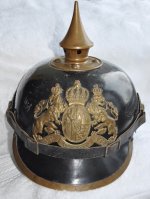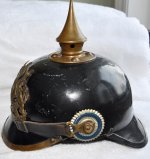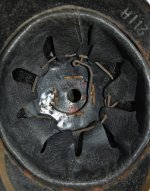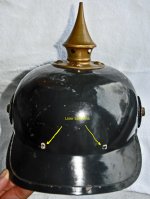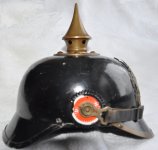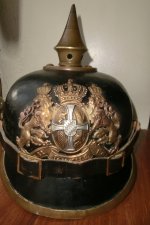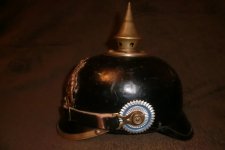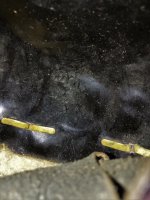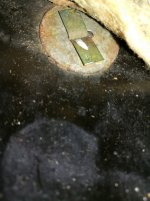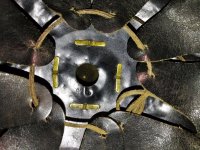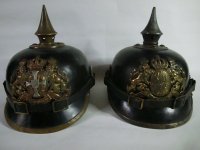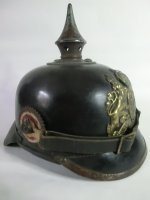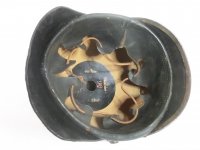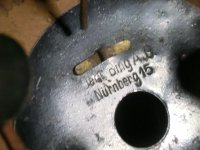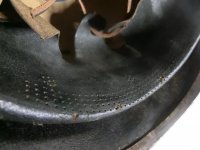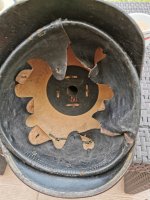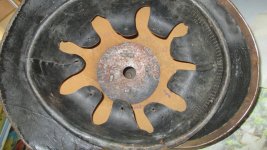Steve Nick
Well-known member
Here is a Pickelhaube I've had for many years and one I've chosen to hold onto throughout the down-sizing of my collection. It's not particularly rare but it's a nice example of the early efforts to fabricate Pickelhaubes with materials other than leather.
It is marked (stencil painted) to the 21st Bavarian Infantry Regiment (“Grand Duke Friedrich Franz von Mecklenburg-Schwerin”) The helmet is marked 1915 and was made by Bing Brothers of Nuremburg, a well established and popular toy manufacturer, under a contract let in October 1914.
The design was meant to replicate as far as practical, an 1895 pattern helmet while making use of tin as a base material. Consequently, in addition to there being no interior spike base reinforcing plate, the rear reinforcing spine was eliminated. All stitching operations required to secure the front and rear visors as well as the attachment of the liner were eliminated. The liner installation was accomplished by adding eight split pins.
The Bavarian NCO kokarde I think would have been added in the field. Unlike leather issue helmets there is felt material inside the liner band. The Wappen is secured with two split pins passed through rectangular slots.
The spike base is secured with four split pins although there is no interior spike base reinforcing plate as found in leather helmets.
The rear visor is trimmed with a metal band unlike leather helmets, probably as a means of finishing what would otherwise have been a raw metal edge.
For some reason I’ve never figured out, this helmet like many other war souvenir helmets seems to have been left lying around when someone was painting and the resultant white over-spray is all over the inside of the helmet.
Hope you find this of interest.
It is marked (stencil painted) to the 21st Bavarian Infantry Regiment (“Grand Duke Friedrich Franz von Mecklenburg-Schwerin”) The helmet is marked 1915 and was made by Bing Brothers of Nuremburg, a well established and popular toy manufacturer, under a contract let in October 1914.
The design was meant to replicate as far as practical, an 1895 pattern helmet while making use of tin as a base material. Consequently, in addition to there being no interior spike base reinforcing plate, the rear reinforcing spine was eliminated. All stitching operations required to secure the front and rear visors as well as the attachment of the liner were eliminated. The liner installation was accomplished by adding eight split pins.
The Bavarian NCO kokarde I think would have been added in the field. Unlike leather issue helmets there is felt material inside the liner band. The Wappen is secured with two split pins passed through rectangular slots.
The spike base is secured with four split pins although there is no interior spike base reinforcing plate as found in leather helmets.
The rear visor is trimmed with a metal band unlike leather helmets, probably as a means of finishing what would otherwise have been a raw metal edge.
For some reason I’ve never figured out, this helmet like many other war souvenir helmets seems to have been left lying around when someone was painting and the resultant white over-spray is all over the inside of the helmet.
Hope you find this of interest.

